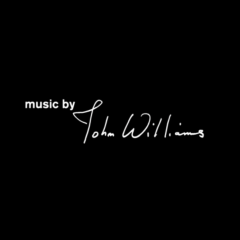-
Posts
2,462 -
Joined
-
Last visited
-
Days Won
20
Loert last won the day on May 15 2017
Loert had the most liked content!
Profile
-
Location
UK
Recent Profile Visitors
13,603 profile views
-
 Brando reacted to a post in a topic:
Steven Spielberg is Making a John Williams Documentary
Brando reacted to a post in a topic:
Steven Spielberg is Making a John Williams Documentary
-
 Edmilson reacted to a post in a topic:
Steven Spielberg is Making a John Williams Documentary
Edmilson reacted to a post in a topic:
Steven Spielberg is Making a John Williams Documentary
-
 crumbs reacted to a post in a topic:
Steven Spielberg is Making a John Williams Documentary
crumbs reacted to a post in a topic:
Steven Spielberg is Making a John Williams Documentary
-
 Loert reacted to a post in a topic:
Steven Spielberg is Making a John Williams Documentary
Loert reacted to a post in a topic:
Steven Spielberg is Making a John Williams Documentary
-
 Mr. Hooper reacted to a post in a topic:
Steven Spielberg is Making a John Williams Documentary
Mr. Hooper reacted to a post in a topic:
Steven Spielberg is Making a John Williams Documentary
-

Steven Spielberg is Making a John Williams Documentary
Loert replied to Manakin Skywalker's topic in JOHN WILLIAMS
Well, I think anyone can see that John Williams is not a goat. -
 Loert reacted to a post in a topic:
Steven Spielberg is Making a John Williams Documentary
Loert reacted to a post in a topic:
Steven Spielberg is Making a John Williams Documentary
-
 Loert reacted to a post in a topic:
Steven Spielberg is Making a John Williams Documentary
Loert reacted to a post in a topic:
Steven Spielberg is Making a John Williams Documentary
-
 Jay reacted to a post in a topic:
Why do we like the music that we like?
Jay reacted to a post in a topic:
Why do we like the music that we like?
-
That post begs the following questions: "Why is some music reinforced culturally over others?" "Why are we trained to hear certain emotional content with some music?" "Where do musical tropes come from?" It's quite easy and convenient to explain away everything in terms of culture. But I suspect the real answer to the question "Why do we like the music that we like" goes deeper than that. Anyway, this is a complex topic that cannot be summarised by a simple Reddit post, and it's been a while since I've thought about it. But I once heard the philosopher Sir Roger Scruton say something to the effect of: "Beauty is neither objective nor subjective, but somewhere in between." That pretty much sums up my current view on these matters.
-
 Loert reacted to a post in a topic:
Why do we like the music that we like?
Loert reacted to a post in a topic:
Why do we like the music that we like?
-
 Loert reacted to a post in a topic:
Why do we like the music that we like?
Loert reacted to a post in a topic:
Why do we like the music that we like?
-
 Loert reacted to a post in a topic:
Last Night I dreamed about John Williams...
Loert reacted to a post in a topic:
Last Night I dreamed about John Williams...
-
 Loert reacted to a post in a topic:
New Vanity Fair article: John Williams Faced Dark Days Before JAWS and STAR WARS Changed Everything
Loert reacted to a post in a topic:
New Vanity Fair article: John Williams Faced Dark Days Before JAWS and STAR WARS Changed Everything
-
 Loert reacted to a post in a topic:
New Vanity Fair article: John Williams Faced Dark Days Before JAWS and STAR WARS Changed Everything
Loert reacted to a post in a topic:
New Vanity Fair article: John Williams Faced Dark Days Before JAWS and STAR WARS Changed Everything
-
 Loert reacted to a post in a topic:
New Vanity Fair article: John Williams Faced Dark Days Before JAWS and STAR WARS Changed Everything
Loert reacted to a post in a topic:
New Vanity Fair article: John Williams Faced Dark Days Before JAWS and STAR WARS Changed Everything
-
 Loert reacted to a post in a topic:
Newly posted Reelin' In The Years interview from 1990
Loert reacted to a post in a topic:
Newly posted Reelin' In The Years interview from 1990
-
 enderdrag64 reacted to a post in a topic:
Last Night I dreamed about John Williams...
enderdrag64 reacted to a post in a topic:
Last Night I dreamed about John Williams...
-
 Smeltington reacted to a post in a topic:
Last Night I dreamed about John Williams...
Smeltington reacted to a post in a topic:
Last Night I dreamed about John Williams...
-
 artguy360 reacted to a post in a topic:
Last Night I dreamed about John Williams...
artguy360 reacted to a post in a topic:
Last Night I dreamed about John Williams...
-
 Marian Schedenig reacted to a post in a topic:
Last Night I dreamed about John Williams...
Marian Schedenig reacted to a post in a topic:
Last Night I dreamed about John Williams...
-
 Jurassic Shark reacted to a post in a topic:
Last Night I dreamed about John Williams...
Jurassic Shark reacted to a post in a topic:
Last Night I dreamed about John Williams...
-
Seeing this thread reminded me of a dream I had of JW last week. I was in a conference at a hotel, and I was sitting in a room where JW was in the audience. I don't remember how I got there, or what the conference was about exactly, other than that it was something to do with music. Anyway, JW was sitting alone, very sage-like and somewhat aloof. I could hear whispering all around me, "Look, there's John Williams!", people pointing etc. JW was pretending not to notice. At a certain point, JW got up, looked at me, gave me a bassoon, and asked me to play. Now, I had never played a bassoon before in my life, but when JW asks you to play, you play. So I blew into the reed...and what came out sounded like a raccoon being strangled. JW looked away from me with major second-hand embarrasment, leaving me standing there holding a bassoon like a complete tool. I think I just placed the bassoon down on the floor and shuffled back to my seat. At this point it was getting close to midnight, so we all went to our rooms. However, the next morning at breakfast, someone handed me some printed sheet music, covered in red ink. It turns out that JW had somehow obtained, and marked and corrected all of my music compositions. Some chords were circled "Good!", others "Bad!", and there were written notes all along the margins, sometimes accompanied with musical sketches suggesting alternatives. The thing was, though, that I knew it was impossible for JW to have received this music before the end of yesterday, so I remember thinking: "When did JW have the time to mark my work? Doesn't he sleep?!" That's about as far as I remember. Unfortunately I can't recall the exact suggestions JW made to my music, I was more just astounded by his work ethic.
-

Steven Spielberg is Making a John Williams Documentary
Loert replied to Manakin Skywalker's topic in JOHN WILLIAMS
Or this guy: -
Me explaining to my (imaginary) gf that listening to film music on its own is actually a thing.
-

What is your favorite way to score study Williams' music?
Loert replied to Sam s.'s topic in JOHN WILLIAMS
You say you watch score reductions on Youtube. But it's even better to try and make these reductions yourself. Some other ideas: - transcribing by ear, then comparing against the original score - arranging for piano (this is especially good for isolating the harmony) - making mockups (trying to create a realistic-sounding mockup is a good way of understanding orchestration and balance) - copying the full score - trying to write a piece in JW's style I tend not to do much "chord analysis" of JW's music because I find that there are often many ways to interpret a given snippet (e.g. is that a Cadd6, or an Amin7 1st inversion?). Especially when it comes to labelling chords, you are required to pick one option, when the reality is that the music often "implies" many different harmonies. In fact, you tend to have more success focusing on scales/modes rather than chords when it comes to JW. Having said that, one thing I have done in the past is to extract a short snippet of music (i.e. a few seconds), write a bunch of questions and answers about it (e.g. "Which instruments are playing the main melody?" or "What is the second chord?"), then converting this into a flashcard in a spaced-repetition app like Anki. It's not so important here whether your interpretation of the chords are "correct" or not, but it at least gets you thinking about JW's music on a regular basis. -

Favorite Version of The Force Field's Intro? (TMP)
Loert replied to ThePenitentMan1's topic in General Discussion
Have no idea what I'm listening to but I like S204 the best. -

"John Williams: Adventures on Earth" - Biography by Tim Greiving
Loert replied to Marian Schedenig's topic in JOHN WILLIAMS
In my dream, I opened the book and it looked like this: -
I believe that is how JW speaks when he goes without composing for more than 24 hours.
-
DR: ...and I've always loved your theme for Princess Leia. JW: ...who???
-
Velasco didn't just fall into the "American middle-class suburbia camera flyover" trap, he dove head-first into it.
-

"John Williams: Adventures on Earth" - Biography by Tim Greiving
Loert replied to Marian Schedenig's topic in JOHN WILLIAMS
The Temple of Boom The Art Crusade -
So there I was, riding Horton the elephant and being chased by police cars...
-
JW: ... and that's why I like to put the 7th on the bottom. DR: But John, we've only just met...





